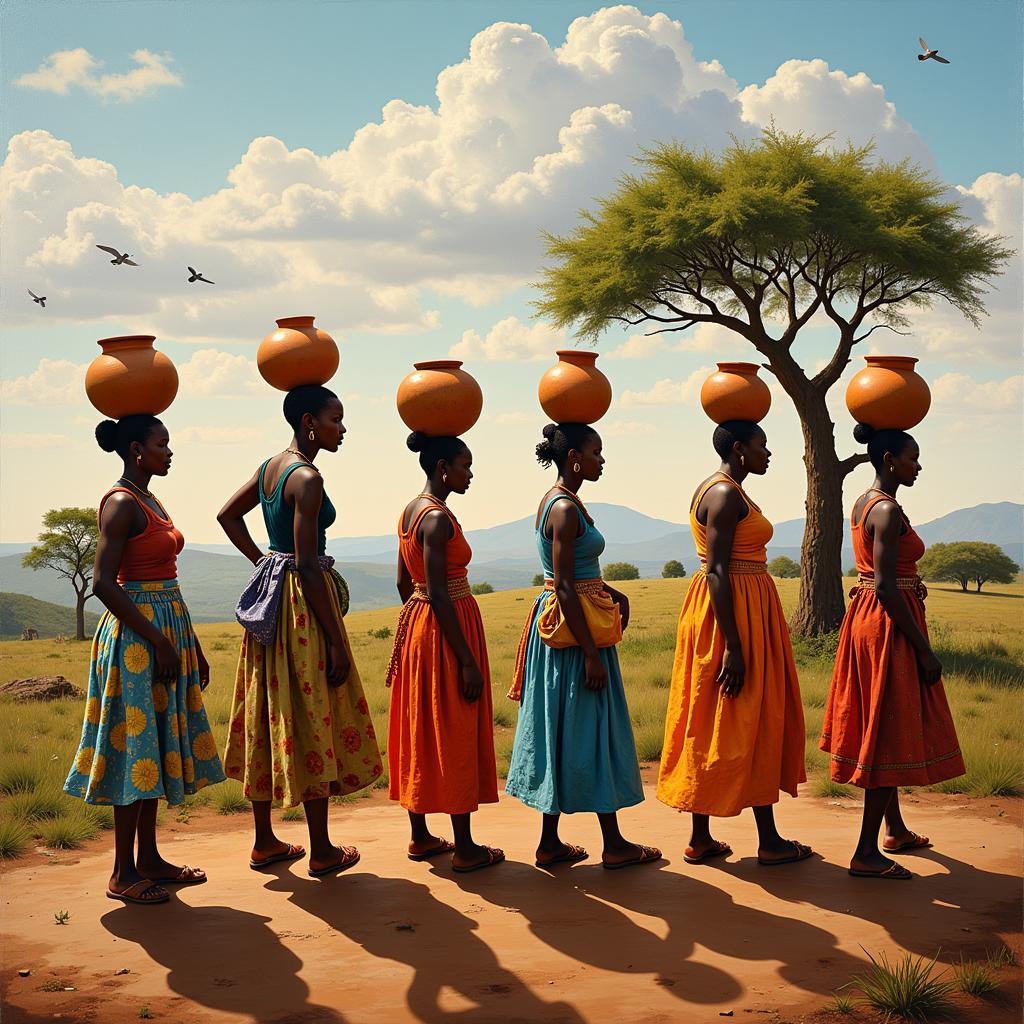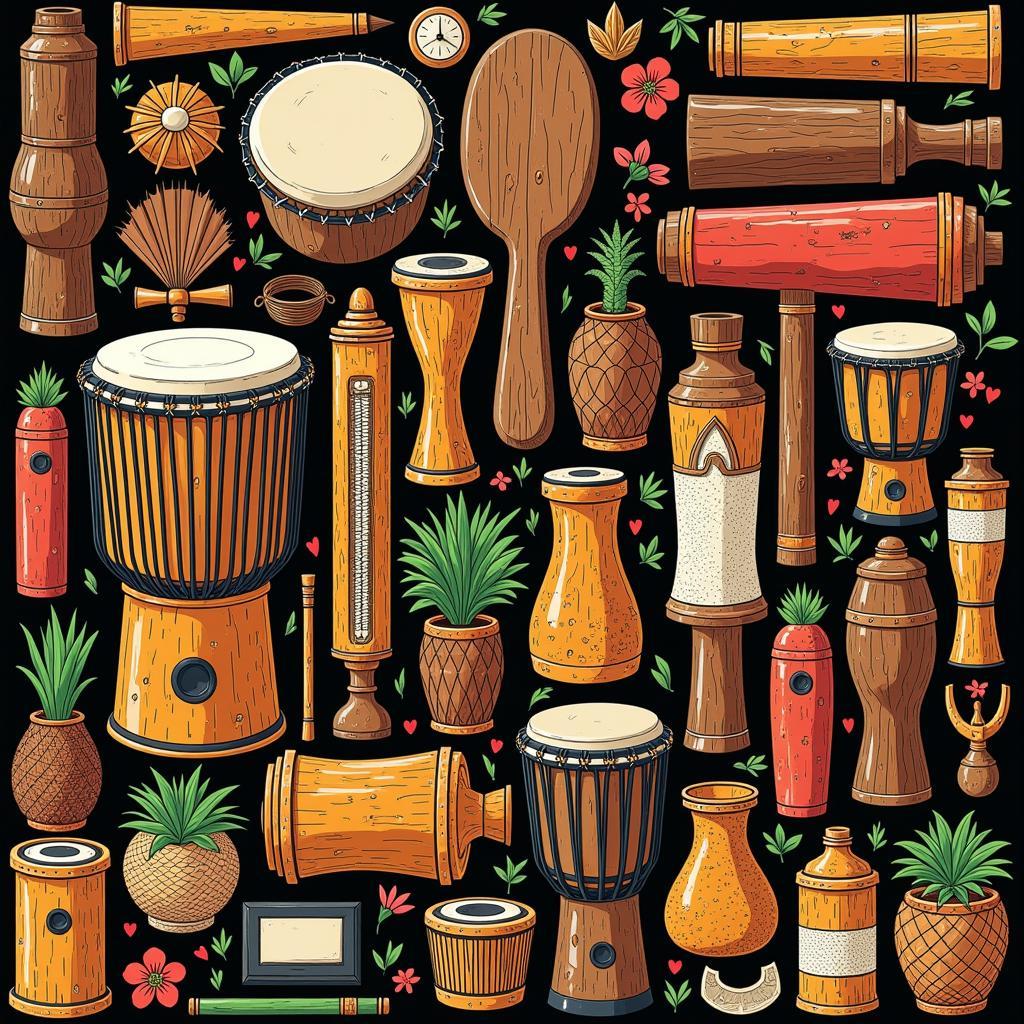Unveiling the African Bambatta Costume
The African Bambatta Costume, a vibrant expression of West African culture, holds deep historical and social significance. This article delves into the intricacies of the Bambatta, exploring its origins, symbolism, and contemporary relevance. We’ll unravel the stories behind this captivating attire, offering insights into the rich tapestry of African traditions.
The Origins and Evolution of the African Bambatta Costume
The Bambatta, also known as the “Bamana” or “Bambara” costume, originates from the Bambara people of Mali and surrounding regions. Historically, it played a crucial role in ceremonial dances, particularly those associated with agricultural cycles and rites of passage. These vibrant displays were not merely entertainment; they were powerful expressions of community identity and spiritual connection. Over time, the Bambatta has evolved, incorporating new materials and stylistic influences, yet retaining its core symbolism and cultural significance.
Decoding the Symbolism of the Bambatta
The Bambatta costume is rich with symbolic meaning. The elaborate headdresses, often adorned with animal horns or feathers, represent power and spiritual authority. The masks, carved with intricate details, embody ancestral spirits and protective deities. The vibrant textiles, typically handwoven and dyed with natural pigments, symbolize the fertility of the land and the interconnectedness of life. Each element of the costume tells a story, reflecting the Bambara people’s deep understanding of their environment and their spiritual beliefs.
Crafting the Bambatta: Materials and Techniques
The creation of a Bambatta costume is a meticulous process, passed down through generations. Traditional materials like cotton, raffia, and animal hides are used. The elaborate masks are carved from wood, often featuring stylized representations of animals or mythical beings. The textile work, often incorporating intricate embroidery and appliqué, showcases the artistry and skill of Bambara craftspeople. These traditional techniques, passed down through families, ensure the continuity of this rich cultural heritage.
The Bambatta in Contemporary Africa: Preserving Tradition and Embracing Change
The Bambatta costume continues to hold a significant place in contemporary African society. It is still worn during festivals and ceremonies, connecting present generations to their ancestors. However, its role has also expanded. Today, the Bambatta can be seen in art galleries, museums, and on fashion runways, reflecting its enduring artistic and cultural value. Contemporary artists and designers are drawing inspiration from the Bambatta, incorporating its elements into modern creations, demonstrating the dynamic interplay between tradition and innovation.
What is the significance of the Bambatta headdress?
The Bambatta headdress, often featuring animal horns or feathers, symbolizes power and spiritual authority within the Bambara community.
What materials are typically used in crafting a Bambatta costume?
Traditional materials like cotton, raffia, animal hides, and wood are commonly used in the creation of Bambatta costumes.
The Enduring Legacy of the African Bambatta Costume
The African Bambatta costume stands as a testament to the rich cultural heritage of the Bambara people. It is more than just clothing; it is a living embodiment of their history, beliefs, and artistic expression. By understanding the Bambatta, we gain a deeper appreciation for the vibrant tapestry of African traditions and their continuing relevance in the modern world. The Bambatta serves as a powerful reminder of the importance of preserving cultural heritage and celebrating the diverse expressions of human creativity.
FAQ
- What is the cultural significance of the African Bambatta costume? The Bambatta costume plays a vital role in Bambara culture, representing spiritual beliefs, social status, and artistic expression.
- Where can I see authentic Bambatta costumes? Authentic Bambatta costumes can be found in museums specializing in African art and culture, as well as during cultural festivals in Mali and surrounding regions.
- Are Bambatta costumes still made today? Yes, Bambatta costumes are still created by skilled artisans, preserving traditional techniques and passing them on to future generations.
- What are the key symbolic elements of the Bambatta? Key symbolic elements include the headdress, mask, and textiles, each carrying specific meanings related to power, spirituality, and connection to the natural world.
- How has the Bambatta costume influenced contemporary art and fashion? The Bambatta’s vibrant aesthetic and symbolic richness have inspired contemporary artists and designers, leading to its incorporation into modern creations.
- What is the best way to learn more about the Bambatta costume? Researching online, visiting museums, and reading books on African art and culture are excellent ways to deepen your understanding of the Bambatta.
- Are there any ethical considerations when purchasing or displaying Bambatta costumes? It is crucial to ensure that any purchase supports ethical practices and respects the cultural significance of the costume, avoiding appropriation and promoting cultural preservation.
Need More Information?
Explore other articles on our website related to African art, culture, and traditions. Discover the fascinating world of African masks, textiles, and music.
Contact Us
For any inquiries or assistance regarding African culture and heritage, please contact us: Phone: +255768904061, Email: [email protected], or visit us at Mbarali DC Mawindi, Kangaga, Tanzania. We have a 24/7 customer support team ready to assist you.



